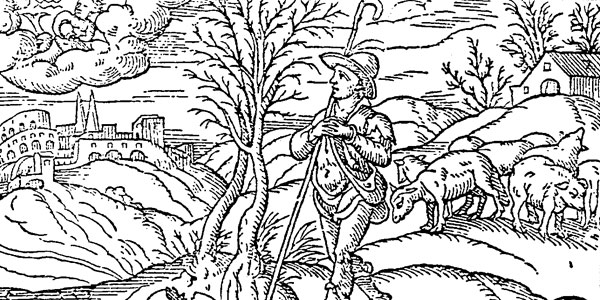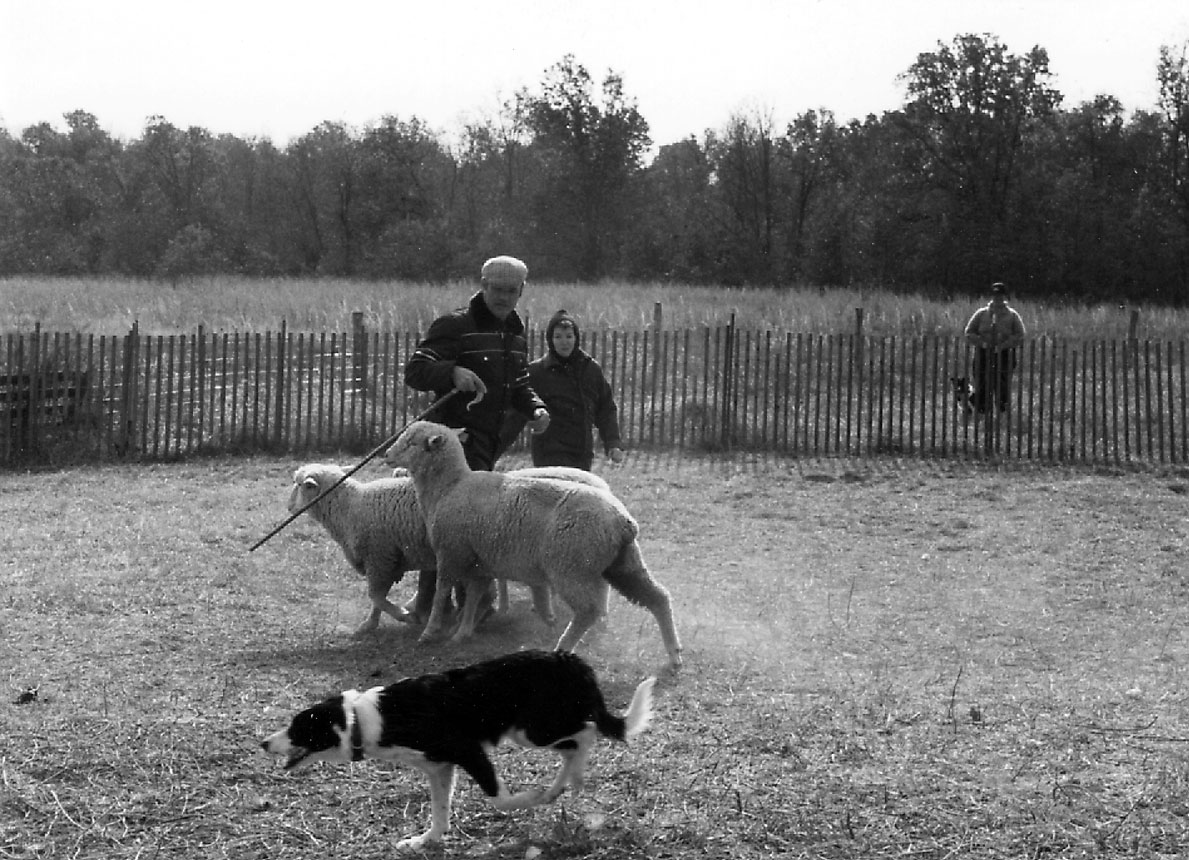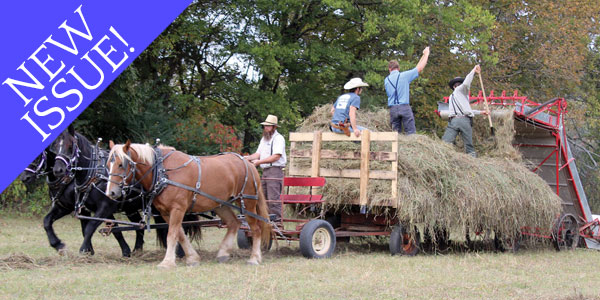
The Shepherd’s Crook
The Shepherd’s Crook
by Nick Evangelista of Missouri
In these times of sophisticated livestock management – from portable pens and chutes, to pillory-like stanchions, to electric fences, and all the other assorted control devices for sheep – it’s strange to think that one of the best tools ever created for a shepherd was a long stick with a hook on the end of it.
The shepherd’s crook.
The origin of this highly useful tool is, as one might expect, lost in the dim shadows of man’s early attempts to domesticate animals he deemed useful. No historians were present when one thoughtful shepherd picked up a long stick, and began poking his sheep to get them moving in a particular direction. Or when he found that a short, angled branch on the end of the stick could be used to hook his animals when it became necessary to catch them. Or when he found that by actually bending the wood itself to make a hook, the strength of the overall instrument was increased. But one might assume, following a logical progression of thought, that the creative process went something along those lines.

It’s safe to say, however, that the shepherd’s crook has been around for a long, long, long time. We find evidence of it in Egyptian art drawn well over four thousand years ago.
It’s interesting to note, too, that in the case of Egypt, the shepherd’s crook became a symbol of sovereignty. Which, if you think about it, points out just how effective a tool it must have been. For something to become a metaphor for supreme control, especially for the practical minded Egyptians, it had to first effectively demonstrate that trait in real life.

Moreover, this symbolic aspect of the shepherd’s crook as a representation of power became so ingrained in the mind of man that, centuries later, the early Church continued its usage to denote leaders of importance.
Underscoring the universal recognition the shepherd’s crook inspired, medieval wool merchants often employed its likeness prominently on their business signs to represent the nature of their trade.
Of course, as a practical part of everyday farm life, the crook continued, as it always had, as the shepherd’s long arm. Trained herding dogs were added to the picture to direct a flock this way and that, but a man still needed that hook to grab individual animals. In illustrations of rural life from the Middle Ages, the shepherd was nearly always defined by his curved staff. Doubtlessly, in those wild days, one can imagine that the crook also doubled for a defensive weapon against both predatory beasts and potential human robbers.

*** In all these years, the shepherd’s crook remained pretty much the same. But by the 1700s, we find preserved examples of equipment bearing a distinctly modern touch. Crooks with small iron hooks were made to specifically hold a sheep’s leg. Larger hooks, crafted from horn, could be used to grab a sheep by the neck. Many of these items, as antiques, have been sold at prices that were vastly greater than the value of the flocks they originally helped to manage.
*** The shepherd’s crook has proven its usefulness almost as long as man has been civilized. So why, one might ask, has it fallen out of favor as a shepherd’s favored tool? The obvious answer is that it takes a certain skill to use it, a skill that doesn’t necessarily develop over night. One needs balance, timing, and a good eye to nab a full-grown eye or ram as it crashes past at a dead run. Furthermore, to be able to angle the hook on the animal’s neck so that it doesn’t slip away, is a technique only practice grants. The use of the shepherd’s crook ends up being, in effect, a kind of martial art. Stack that up against a nice, solid portable fence. You achieve instant success. The animal is contained. It goes where you want it to. No muss, no fuss. And there’s no need to develop a special skill.
On the other hand, when you consider the skyrocketing prices of livestock confining materials these days, perhaps buying a shepherd’s crook or two and developing the ability to use them isn’t such a bad idea (especially for a shepherd just starting out who doesn’t have a lot of money to drop into extras).

And, best of all, just think of all that wonderful, free exercise you’ll be getting when you start dragging recalcitrant sheep around by the neck or leg. City folks have to pay health clubs or gyms huge sums of cash for that kind of muscle stimulation.
In the end, the shepherd’s crook – simple in design, efficient in its basic application, and inexpensive to use – will serve to remind us that the simple ways of farming are sometimes the best, that once upon a time, a shepherd stood on a hillside with a stick in his hand, and that was all he needed to successfully guide his flock.




